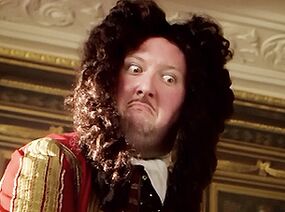17th century
| Timeline |
| previous: 16th century next: 18th century |
| Years of interest |
|
|
The famous personae of the 17th century included Milton, Rubens and Purcell. Tragic events that happened in this century included the execution of Filippo Bruno, the Thirty Years' War and the Great Plague. (AUDIO: The Witch from the Well) This century was also exceptional in English history because of a period of the Protectorate when the country was not ruled by a monarch. Instead, a Lord Protector of England, Scotland and Ireland was appointed. (PROSE: The Roundheads)
The Renaissance period spanned from the 14th to the 17th century. (PROSE: A History of Humankind [+]Loading...["A History of Humankind (novel)"])
By the mid-17th century, the nobility of England were beginning to lose their political power and influence. However, many of these lords and ladies remained prominent members of their local communities. (PROSE: A History of Humankind)
In the 17th century, a local clergyman saw the Witch of the Well. (TV: Hide)
River Song and Helen Sinclair visited Rennes-le-Château in the 17th century while searching for the eighth piece of the Doomsday Chronometer. (AUDIO: The Doomsday Chronometer)
In the early 17th century, the English village of Bilehurst Cragg was abandoned following the escape of the Morax from their prison within the hill and the Thirteenth Doctor's intervention. King James swore to erase all records of the village while Ryan Sinclair asked that he, at least, ensured that the villagers all got out all right first. (TV: The Witchfinders)
At some point in the 17th century, a civil war took place in England, during the time of Charles II. (AUDIO: The Spectre of Lanyon Moor)
As with most centuries of the first two millennia, the 17th century was home to Jack Harkness, Amy Pond and an Auton duplicate of Rory Williams. A version of Jack from around the time of the deaths of Toshiko Sato and Owen Harper existed in this century, having been buried alive in the 1st century by his brother, Gray. He perpetually died and resurrected an unknown number of times in an earthen tomb underneath Cardiff. (TV: Exit Wounds) Meanwhile, a near-dead Amy Pond was kept alive inside the Pandorica, beginning in the 2nd century. An Auton version of Rory kept vigil near her the entire time. They both awaited a moment in the mid-1990s when a young Amelia Pond would touch the outside of the Pandorica and restore Amy to full health. (TV: The Big Bang)
It was substantially unclear whether the events of the subsequent Big Bang Two erased Amy and Rory's presence in the 17th century. This ambiguity was caused, in part, because the non-Auton, married Rory Williams claimed to have remembered being "made of plastic" at his wedding reception, suggesting that, at least inasmuch as he was concerned, he and Amy were present in the 17th century. (TV: The Big Bang) Amy seemed to also remember those events, and displayed a fondness for the Auton Rory both during her honeymoon (TV: A Christmas Carol) and during a kind of lullaby to her newborn child Melody Pond. (TV: A Good Man Goes to War)
The 17th century was also among the centuries endured by Ashildr, (TV: The Woman Who Lived) a 9th century[1] Viking girl who was rendered effectively immortal when she was brought back to life by the Twelfth Doctor through a self-repairing Mire repair kit. (TV: The Girl Who Died)
References[[edit] | [edit source]]
Making omelette fines herbes for himself and Craig Owens in 2010, the Eleventh Doctor explained that he learned to cook in 18th century Paris. Realising that was "not recent", the Doctor amended it to the 17th century then the 20th century. (TV: The Lodger)

